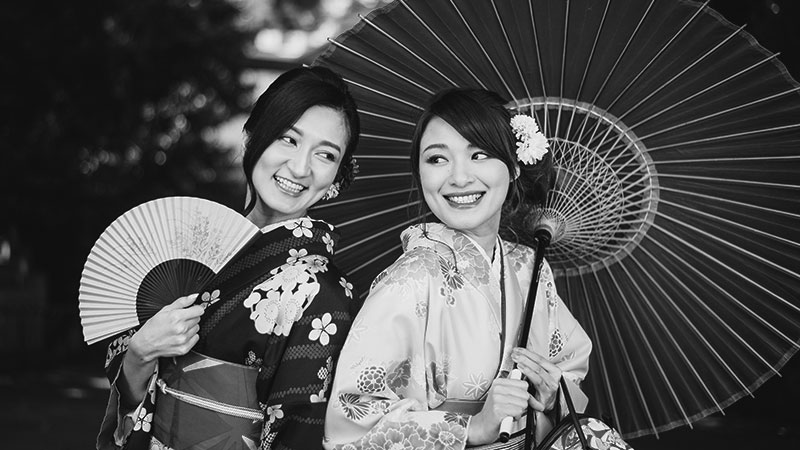History of Japanese Traditional Beauty Secret
Interestingly, while beauty standards tend to fluctuate with time, beauty standards in Japan have almost remained the same—Japanese beauty focuses on creating a flawless appearance with an emphasis on lighter, brighter skin.
“A fair complexion hides seven flaws” is an old Japanese saying that shows how much the Japanese value light skin. Even now, when beauty trends come and go, women in Japan still strive for a pale idea of beauty and offer different solutions for your daily ritual.
This article examines where the Japanese idea of beautiful skin came from and how it has changed over time.
A deep history
As mentioned, having light skin has always been seen as beautiful in Japan. This idea can be traced back to the Nara period (710-794). During this time, Japan experienced a period of significant cultural exchange with China and Korea.
The interactions between these countries influenced many aspects of Japanese society, including beauty. Like in many other cultures at the time, people in Japan thought fair skin was a sign of beauty and social status.
And due to this, many women in Japan strived to make their skin lighter. They did this using white powder made from crushed seashells or rice bran.
They often wore long, straight hair with bangs covering their foreheads and decorated them with combs, pins, and ribbons.
They used black ink to define their eyes and eyebrows and red pigment to color their lips. Some even used gold and silver powder to add shimmer to their skin.
Clothing was heavily influenced by Chinese fashion. Women wore long, flowing robes with wide sleeves and high collars; in most cases, the robes had intricate embroidery or patterns.
During the Heian period (794- 1185), women kept putting white powder (oshiroi) on their faces to create a porcelain-like complexion, contrasting with black hair and eyebrows.
They also plucked their eyebrows and repainted them higher on their foreheads. The unique thing during this period was that wealthy women also darkened their teeth. The black teeth resembled tooth decay, a sign of wealth because only the rich could afford sweets. The darkening of teeth also kept the teeth healthy and improved sex appeal.
Plump, round-faced women were considered beautiful because they could afford food. It was also perfect to have long, straight black hair.
During the Edo Period (1603–1868), Japan was ruled by the Tokugawa shogunate, which brought peace and stability to the country after hundreds of years of war.
Due to the stability, arts and culture, including beauty, flourished. Women used Red (lips, fingernails), white (face), and black (teeth, eyebrows) to stand out.
Women also started steaming their faces to make their skin smooth and white and used the juice from the sanekazura root to straighten their hair.
Detailed books on cosmetic etiquette were written, advising women how to use the various cosmetic products correctly, with the best makeup being light and done right.
Pursuit of a more natural skin color
The women’s suffrage movement started to gain traction in Japan in the late nineteenth century.
And it was during this time that beauty concerns started to shift as women pushed for more educational possibilities, protection from repressive patriarchal traditions, and more chances in the workforce.
Shiseido, one of the world’s largest cosmetic firms, founded in 1904, started offering cosmetics in more colors other than the traditional ones.
As women became more empowered, there was a change in beauty standards away from flawless white skin and toward a more natural look.
As more women joined the workforce, they wanted cosmetics that were easy to apply and accentuated their natural beauty.
In the early twentieth century, western styles had a tremendous effect on Japanese beauty. Western influences, particularly after WWII, contributed to aesthetic fads such as double eyelid surgery that spread like wildfire across East Asia.
In the 1980s, Japanese women wanted to express their identities, and there was a clear shift away from mimicking the west.
Models like Yamaguchi Sayoko fueled the fire of self-identity as she rose to prominence on the world stage with her straight jet-black hair and almond eyes. This inspired many young Japanese women to embrace their natural beauty and ditch the western ways.
Japanese beauty as we know it today
Japanese women may no longer use thick white face powder or darken their teeth, but having perfect, light, bright, and natural skin is one of their most important beauty standards.
Although Japan is a giant in the world market for beauty products, Japanese women embrace the techniques of “barely there” makeup, where they apply just small amounts of cosmetics to maintain a natural look.
Japanese women believe that well-cared-for skin is the key to beauty. Due to this, they strive to take good care of their skin and recommend that you have your daily ritual for good skin instead of relying on cosmetics.
You will also find plenty of Japanese literature on proper skin care, such as how to balance your skin’s PH level and many others.

